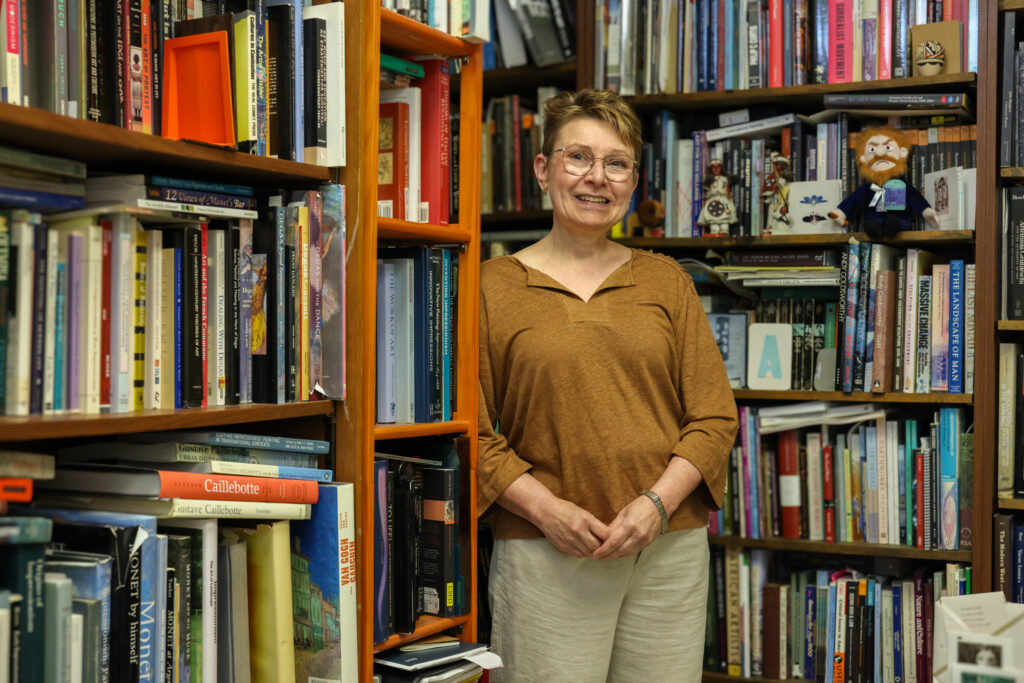Quenching a thirst for art knowledge through collected works
Related Posts
Connect With Us
August 27, 2024
Professors’ offices can be counseling centers, laboratories, or even sanctuaries. Considering art historian Bille Wickre has been part of Albion’s faculty for more than 30 years, you might expect her office to be a museum.
You’d be wrong. “It kind of looks like a library blew up in here,” Wickre said (rather proudly) of her corner on the second floor of the Bobbitt Visual Arts Center. “I have books about everything.”
Liberal arts faculty have to be generalists and, for Wickre, “everything” includes art history books spanning the past 800 years and genres ranging from medieval religious iconography to contemporary LGBTQIA+ artistic movements. Wickre has read nearly all the books and most have been part of a course she’s taught, used either by her or one of her students.
“When students need help with a paper, I just keep handing them books and they leave with their arms full,” she explained.

Albion College art historian Bille Wickre.
Wickre’s library also contains several books that she’s added to the academic community. With professor emerita Anne McCauley, Wickre founded Albion’s Celadon Press, which to date has produced four volumes of scholarly research and criticism written by students, faculty, and staff, featuring artwork from Albion’s own collections.
Three volumes came out of the History of Prints classes team, taught by McCauley and Wickre. Students learned art history, made original prints, and wrote an essay for publication on Albion-owned prints by artists including Degas and Picasso.
Wickre reflected on the experience of creating catalogs with students and colleagues. “These classes and books were good experiential learning projects for everyone,” she said. “I loved collaborating and sharing ideas with Anne and learning from her in the classroom. The students were engaged with prints at a profound level—both making and studying them.”
Wickre anticipates expanding her library, thanks to Albion’s changing student demographics. “Recently, I’ve read more books that explore the evolving human condition–identity, social position, immigration, politics, death among other things. Our students have different interests and our classes must address them and the theories that frame them,” she said.
And don’t let the books fool you. Wickre has a passion for scholarship, but it’s all rooted in art. Her shelves also contain artwork by students and visiting artists, while near her desk is a work by American artist Mary Beth Edelson, a gift to the college collection from Elizabeth Harmon-French ’51.
“Elizabeth is so generous. When I admired the piece, she offered it to the college,” Wickre said. Also hanging adjacent to her desk are a Philip C. Curtis drawing and a Paul Cezanne print.
Happily for Wickre, there’s also room for gifts from students and colleagues, such as the folded-paper animal head a former student’s daughter made, the Van Gogh doll with removable ear, and an assortment of photos and cards.
“This is a very inspirational space because I have so many things students and colleagues have given me,” Wickre concluded. “Almost everything I do, I do for students and it comes back a hundredfold.”